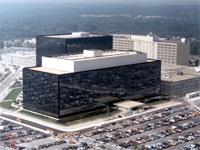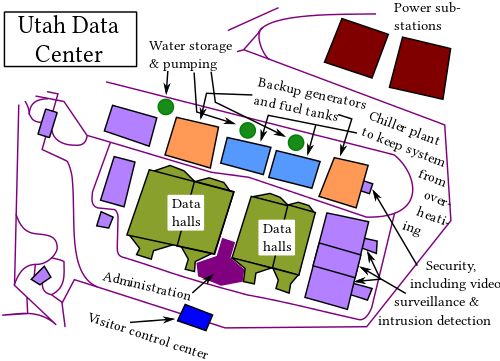
Big Data Meets Big Brother: Inside the Utah Data Center
The widely publicized leaks from the National Security Agency (NSA) have provided a fascinating glimpse into the covert data collection activities of the U.S. Government. Among other things, these leaks have revealed the enormous volume of phone records currently being collected, stored and analyzed.
 This begs the question: “Where does all of this Big Data go?” Starting this fall, it’s likely that a good chunk of it will be going to Utah!
This begs the question: “Where does all of this Big Data go?” Starting this fall, it’s likely that a good chunk of it will be going to Utah!
While the NSA operates many data facilities, none compare to the new $1.5 Billion data center scheduled to open this September in Bluffdale, Utah. Vanee Vines, an NSA spokeswoman, has provided the following information:
“NSA would like to confirm, on the record, that the Utah Data Center is a state-of-the-art data facility designed to support the U.S. intelligence community’s efforts to further strengthen and protect the nation. Its operations will be lawfully conducted in accordance with U.S. laws and policies.”
The availability of cheap power and water contributed to the selection of the Utah site over 38 contenders. A satellite view of the construction site can be viewed here: UDC Map.
Inside the Utah Data Center
It would be an understatement to say this 120 acre facility is BIG! Most of the building specifications were publicly disclosed in the construction bid solicitation from the Army Corps of Engineers:
- Tier 3 Data Center Standard
- Four 25,000 sq. ft. halls will house servers and related equipment.
- Buildings totaling 900,000 sq. ft. will house technical support and administration.
- Extensive security systems will include state-of-the-art fencing, closed circuit cameras, biometric identification, vehicle inspection facility, visitor control center, etc.
- Fuel tanks will be large enough to supply backup generators for 3 days.
- Water storage will be available to pump 1.7 million gallons per day to cool the facility and equipment.
- Facility will have LEED Certification (Silver Rating)
- A Rocky Mountain Power substation will be built to satisfy the 65-megawatt power demand. Note that 65 Megawatts is enough power to supply about 33,000 homes!
Here is the proposed layout for the entire facility:

http://en.wikipedia.org/wiki/File:Utah_Data_Center_of_the_NSA_in_Bluffdale_Utah_vectorized.svg
In their presentation to prospective bidders, the U.S. Army Corp of Engineers provided the following schematic for each of the four data halls on the site. The entire presentation is available at this government link.
UDC Data Halls
Although it will be a state of the art facility, the NSA hopes to incorporate off-the-shelf components to reduce costs. The NSA won’t disclose the capacity, but commercially available storage devices can now pack as many as 50 Petabytes of information in 1,000 sq. ft.
The Salt Lake City Tribune reports that the government may use Cray XC30 supercomputers to mine some of this data. These computers will run up to 1 million Intel Xenon core processors with a combined speed of 100 petaflops. It’s unclear whether these supercomputers, the fastest in the world, would actually be housed in the Bluffdale facility.
How It Will Operate:
The Salt Lake City Tribune has reported extensively on the Utah Data Center. In discussions with the Tribune, the NSA has provided the following information:
- The facility will house only about 200 employees to run the equipment. Most data analysis will be performed at other facilities.
- The facility will be networked with as many as 40 other data centers. If the facility goes down, the NSA claims that no data will be lost.
- Lonny Anderson, the NSA’s Chief Information Officer, noted: “We’re learning, just like industry is, that in big data, machine analytics are critical to success. So we’ll have machine analytics running on everything. We do today, and we’ll continue to improve those.”
- The Bluffdale facility will be a key component of the NSA “cloud” to provide intelligence data to NSA employees and other agencies from around the world.
Regardless of how you feel about the government’s surveillance activities, the Utah Data Center is clearly a facility of staggering proportions and exemplifies just how far Big Data has come.
About the Author:
Thomas Parent blogs for Rackspace Hosting. Rackspace Hosting is the service leader in cloud computing, and a founder of OpenStack, an open source cloud operating system. The San Antonio-based company provides Fanatical Support to its customers and partners, across a portfolio of IT services, including Managed Hosting and Cloud Computing.
Related Items:
Data Center Building Boom Comes to Iowa
Big Data Indexing: Addressing Business Risks Near You
Cloudera Adds a Sentry to Their Stack






























